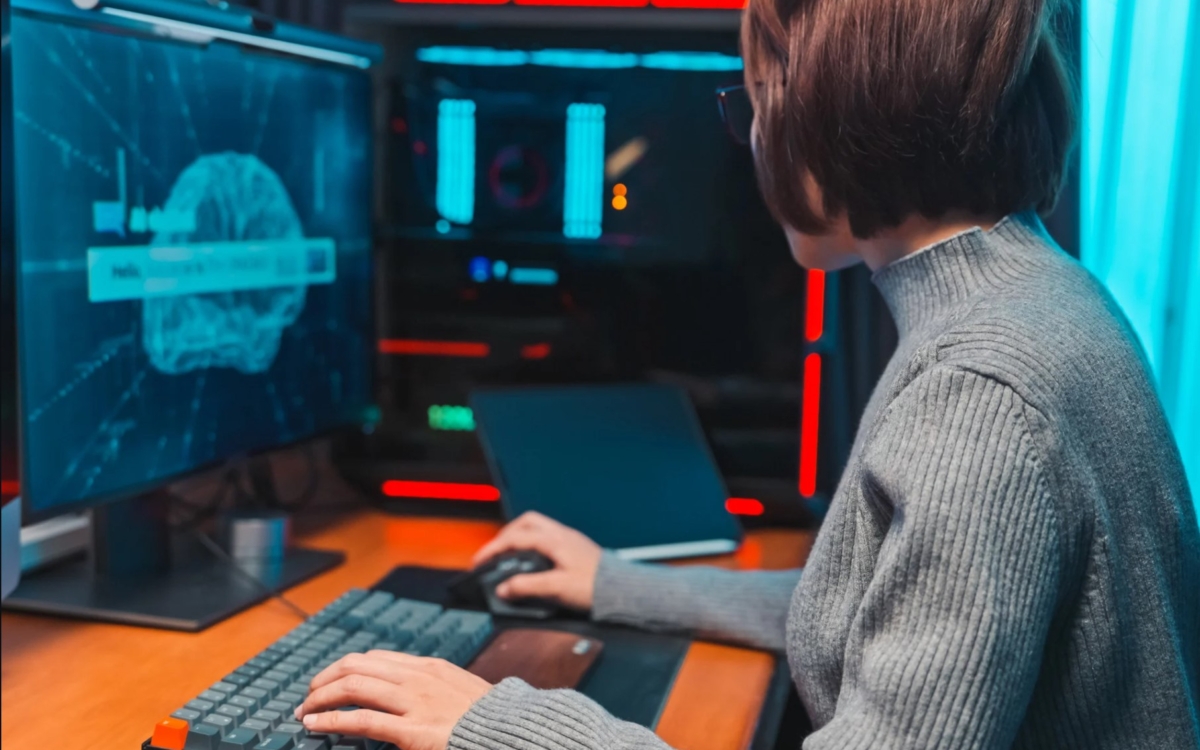The Development of AI Generators: Revolutionizing Content creation

In our digital age, the demand for content creation is ever-increasing across various industries, from marketing and journalism to entertainment and education. However, producing high-quality, engaging content consistently can be a daunting task. Enter AI generators – innovative tools profiting artificial brains (AI) to reduces costs of and improve the content creation process. In this article, we’ll delve into the development of AI generators, exploring nsfw character generator benefits, impact, and the future they promise. AI generators represent a significant milestone in the field of natural language processing (NLP) and machine learning. They utilize advanced algorithms to generate human-like text, comprising from short-form content like twitting and product descriptions to long-form pieces such as articles and documents. The beginning of AI generators can be tracked back to early experiments in computer-generated language generation, but their growth and refinement have accelerated in recent years. Modern AI generators employ a variety of techniques, including frequent nerve organs networks (RNNs), transformers, and deep learning architectures like GPT (Generative Pre-trained Transformer). These models are trained on vast datasets comprising diverse textual sources, enabling them to understand language patterns, semantics, and context. Through this training, AI generators gain the ability to produce coherent, contextually relevant content on a wide range of topics.
One of the key benefits of AI generators is their flexibility. Users can input requests or keywords to guide the content generation process. For instance, a marketing team could provide a brief for a promotional campaign, and the AI generator would produce compelling ad copy tailored to the specified audience and objectives. Similarly, journalists can use AI generators to draft news articles based on breaking events, reducing the time and effort required for initial drafts. Moreover, AI generators offer scalability, enabling the rapid production of content at scale. Whether it’s generating product descriptions for an e-commerce platform or creating personalized email newsletters for subscribers, AI generators can efficiently handle large amounts of content generation tasks, freeing up recruiting for more strategic interests. The impact of AI generators expands across various industries, revolutionizing content creation workflows and unlocking new possibilities for businesses and inventors alike. In marketing and advertising, AI generators are empowering brands to craft compelling narratives and resonate with their target audiences more effectively. By generating convincing ad copy, social media posts, and blog articles, companies can maintain a regular online presence and drive proposal without extensive manual effort.
In journalism and media, AI generators are enhancing newsrooms’ capabilities by assisting journalists in research, fact-checking, and content production. While AI-generated content may not replace human journalists entirely, it can complement their work by providing valuable information and augmenting what is this great canceling process, particularly for breaking news stories. In education and e-learning, AI generators are assisting the development of interactive learning materials, quizzes, and tutorials. Educators can leverage AI-generated content to enhance course materials, customize learning experiences, and provide students with immediate feedback, encouraging a more engaging and efficient learning environment. Despite their remarkable capabilities, AI generators also raise significant challenges and honourable considerations. One concern is the potential for misinformation and content mind games. As AI-generated content becomes indistinguishable from human-authored text, there is a risk of malicious famous actors applying this technology to spread false information, trick consumers, or change public opinion. Another challenge is the issue of algorithmic error. AI generators study from the data they are trained on, which can reflect and perpetuate existing biases present in society. For example, biased language models may inadvertently reinforce stereotypes or marginalize certain groups. Addressing these biases requires careful curation of training datasets and ongoing monitoring and mitigation efforts.
Furthermore, there are concerns about the impact of AI generators on employment and creativity. While AI generators can reduces costs of content creation processes, there is a fear that they may cause job displacement in industries reliant on human-authored content. Additionally, some claim that counting too heavily on AI-generated content could contrain creativity and innovation by homogenizing cultural expression and storytelling. Looking ahead, the future of AI generators holds immense potential for further advancements and applications. Continued research and development in AI and NLP technologies will likely lead to even more sophisticated and versatile content generation models. These models may incorporate multimodal inputs, enabling them to generate not only text but also images, videos, and other forms of media. Moreover, AI generators are positiioned to play a crucial role in the emerging field of creative AI, where machines team up with humans in artistic interests such as literature, music, and visual martial arts disciplines. By enhancing human creativity with computational power and data-driven information, AI generators could invigorate new forms of expression and push the limits of artistic innovation.
AI generators represent a transformative force in content creation, offering freakish efficiency, scalability, and flexibility across industries. From marketing and journalism to education and entertainment, these innovative tools are reshaping how content is produced, consumed, and distributed in the digital age. However, realizing the full potential of AI generators requires addressing challenges related to error, misinformation, and honourable considerations while encouraging collaboration between humans and machines. Even as navigate this rapidly growing landscape, taking on the opportunities and responsibly harnessing the ability of AI generators will be key to unlocking their benefits and by using a more creative and inclusive future.
+ There are no comments
Add yours